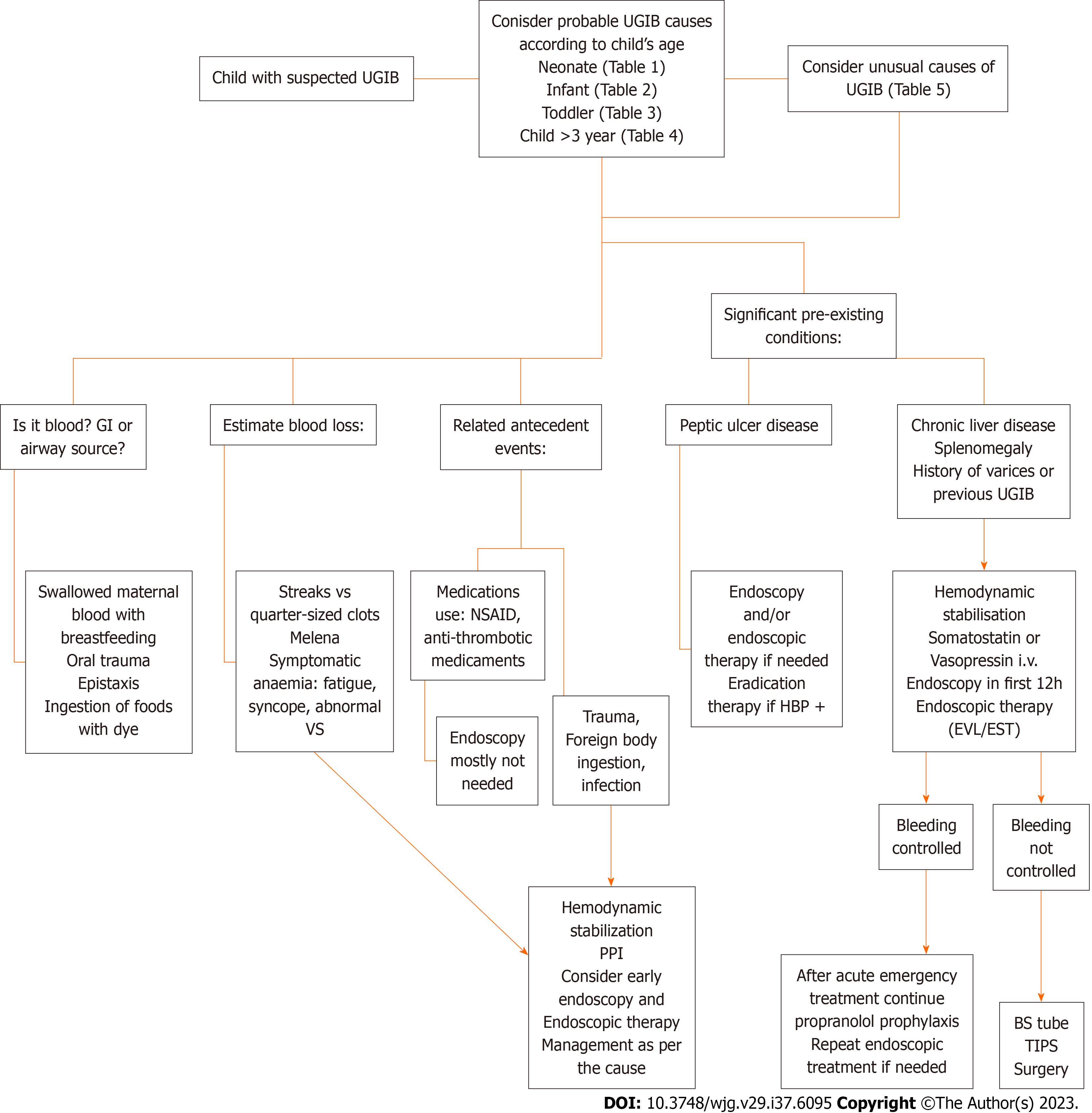Copyright
©The Author(s) 2023.
World J Gastroenterol. Dec 21, 2023; 29(47): 6095-6110
Published online Dec 21, 2023. doi: 10.3748/wjg.v29.i47.6095
Published online Dec 21, 2023. doi: 10.3748/wjg.v29.i47.6095
Figure 1 Anatomic locations of upper gastrointestinal bleeding in children, with corresponding common causes.
CMPA: Cow’s milk protein allergy; NSAIDs: Non-steroidal anti-inflammatory drugs; PGS: Prolapse gastropathy syndrome.
Figure 2 The most common causes of upper gastrointestinal bleeding in children from 1-year-old to 3-years-old.
A: Gastric ulcer in a 3-year-old boy who presented with hematemesis; B: Mallory-Weiss tear in a 3-year-old boy; C: Esophageal varices grade II in a 2-year-old boy with extrahepatic portal vein obstruction after cardiac surgery.
Figure 3 Causes of upper gastrointestinal bleeding in children older than 3-years-old.
A: Erosive gastritis in a 14-year-old girl with cerebral palsy; B: Gastroesophageal varices type 2 in a 6-year-old girl with chronic liver disease due to extrahepatic portal vein obstruction; C: Macronodular gastritis in a 16-year-old girl due to Helicobacter pylori infection; D: Eosinophilic esophagitis in a 16-year-old boy; E: Gastric trichobezoar in a 9-year-old boy; F: Traumatic perforation of the duodenum as a consequence of a handlebar injury in a 6-year-old boy. The patient was referred to the hospital two days after injury and the surgery was performed on the day of admission.
Figure 4 Clinical approach to children with upper gastrointestinal bleeding.
BS: Blakemore-Sengstaken; EST: Endoscopic sclerotherapy; EVL: Esophageal varices ligation; GI: Gastrointestinal; PPI: Proton pump inhibitor; TIPS: Transjugular intrahepatic portosystemic shunt; UGIB: Upper gastrointestinal bleeding; VS: Vital signs; NSAIDs: Non-steroidal anti-inflammatory drugs.
- Citation: Kocic M, Rasic P, Marusic V, Prokic D, Savic D, Milickovic M, Kitic I, Mijovic T, Sarajlija A. Age-specific causes of upper gastrointestinal bleeding in children. World J Gastroenterol 2023; 29(47): 6095-6110
- URL: https://www.wjgnet.com/1007-9327/full/v29/i47/6095.htm
- DOI: https://dx.doi.org/10.3748/wjg.v29.i47.6095












